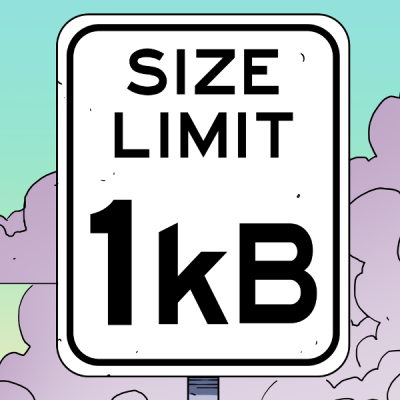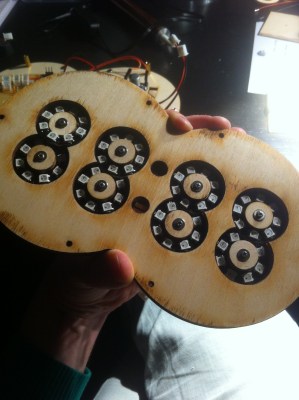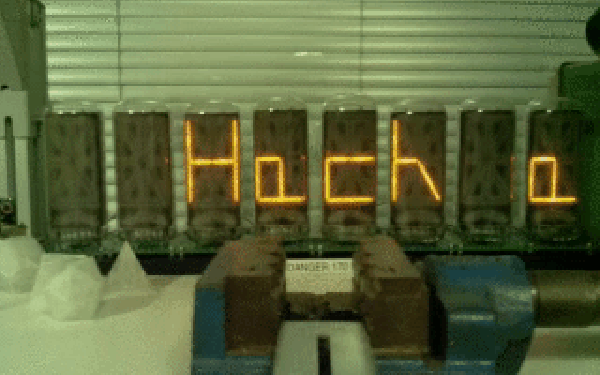Hour glasses have long been a way to indicate time with sand, but the one-hour resolution isn’t the best. [Erich] decided he would be do better and made a clock that actually wrote the time in the sand. We’ve seen this before with writing time on a dry erase board with an arm that first erases the previous time and then uses a dry erase marker to write the next time. [Erich]’s also uses an arm to write the time, using the tip of a sea shell, but he erases the time by vibrating the sandbox, something that took much experimentation to get right.
To do the actual vibrating he used a Seeed Studio vibration motor which has a permanent magnet coreless DC motor. Interestingly he first tried with a rectangular sandbox but that resulted in hills and valleys, so he switched to a round one instead. Different frequencies shifted the sand around in different ways, some moving it to the sides and even out of the sandbox, but trial and error uncovered the right frequency, duration, and granular medium. He experimented with different sands, including litter for small animals, and found that a powder sand with small, round grains works best.
Four white LEDs not only add to the nice ambience but make the writing more visible by creating shadows. The shells also cleverly serve double duty, both for appearance and for hiding things. Shells cause the arms to be practically invisible until they move (well worth viewing the video below), but the power switch and two hooks for lifting the clock out of the box are also covered by shells. And best of all, the tip that writes in the sand is a shell. There’s plenty more to admire about the cleverness and workmanship of this one.



 [Danjovic’s] implantation displays intervals and centivals, exactly what you would need to know the current time of day. He used a Microchip PIC16F628 running from a 4 MHz clock. time is displayed on seven segment LEDs. The PIC is programmed in C, using the classic version of Microchip’s own IDE: MPLAB 8.92. The code uses 297 program words. Since the ‘628 uses 14-bit instructions, that equates to just under 520 bytes. Perfect for the 1 kB challenge!
[Danjovic’s] implantation displays intervals and centivals, exactly what you would need to know the current time of day. He used a Microchip PIC16F628 running from a 4 MHz clock. time is displayed on seven segment LEDs. The PIC is programmed in C, using the classic version of Microchip’s own IDE: MPLAB 8.92. The code uses 297 program words. Since the ‘628 uses 14-bit instructions, that equates to just under 520 bytes. Perfect for the 1 kB challenge!
 Each digit is made using one pair of Neopixel rings, stacked to form a figure of eight. All the digits are composed of arcs, so readability isn’t the best but it’s not hard either. [rhoalt] does mention that the display is easier to read via blurred camera images rather than visually, which isn’t surprising. We’re long used to seeing numbers composed of straight line segments, so arc segmented digits do look weird. But we wouldn’t have known this if [rhoalt] hadn’t shown us, right ? Maybe a thicker diffuser with separator baffles may improve the readability.
Each digit is made using one pair of Neopixel rings, stacked to form a figure of eight. All the digits are composed of arcs, so readability isn’t the best but it’s not hard either. [rhoalt] does mention that the display is easier to read via blurred camera images rather than visually, which isn’t surprising. We’re long used to seeing numbers composed of straight line segments, so arc segmented digits do look weird. But we wouldn’t have known this if [rhoalt] hadn’t shown us, right ? Maybe a thicker diffuser with separator baffles may improve the readability.
 For the display, he’s using eight big vintage Burroughs B7971 Nixie Tubes. These aren’t easy to source, and current prices hover around $100 each if you can find them. The 170V DC needed to run each tube comes from a set of six
For the display, he’s using eight big vintage Burroughs B7971 Nixie Tubes. These aren’t easy to source, and current prices hover around $100 each if you can find them. The 170V DC needed to run each tube comes from a set of six 













